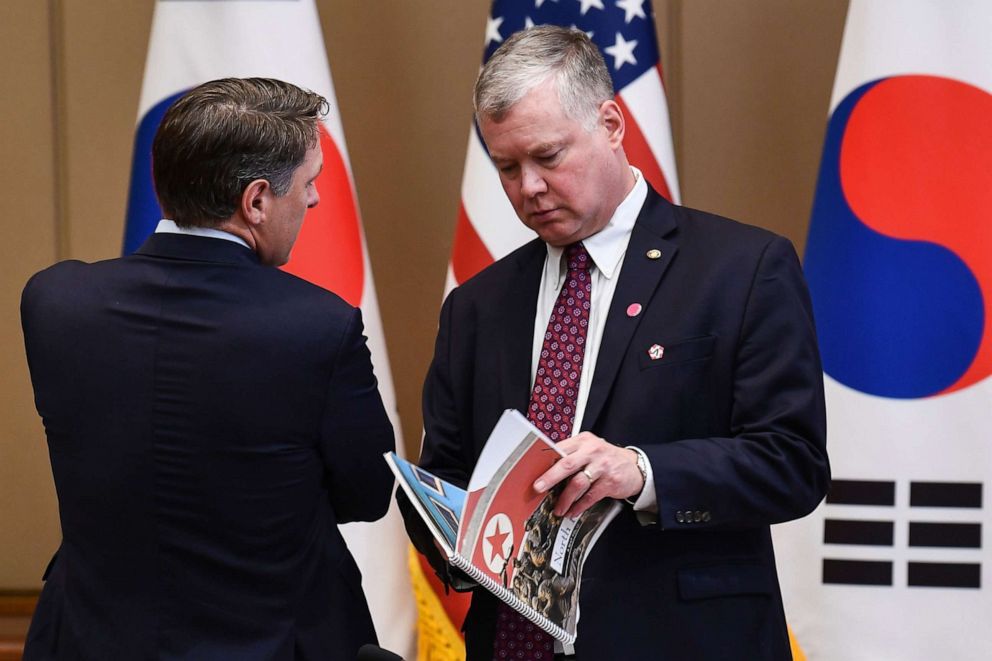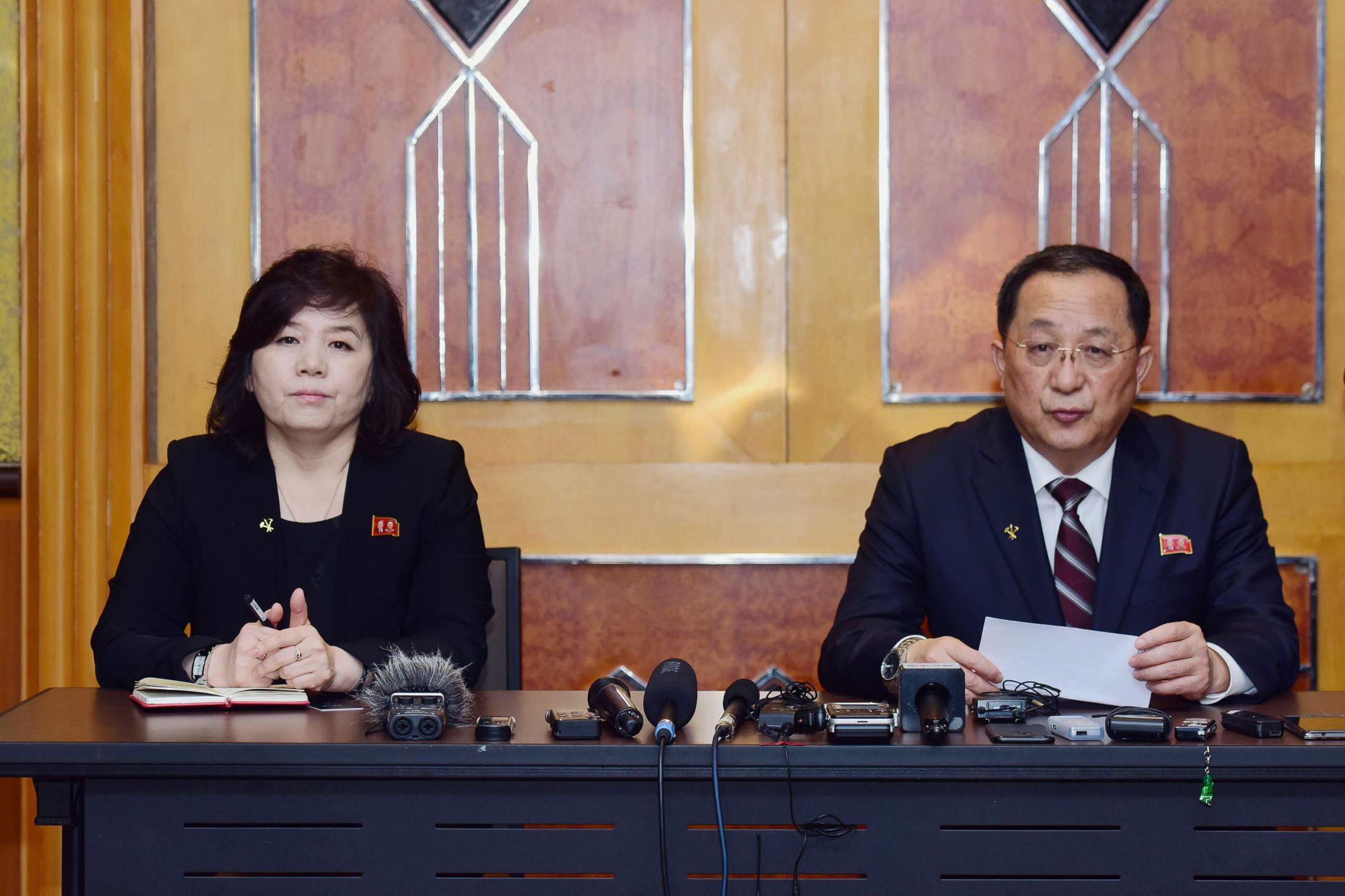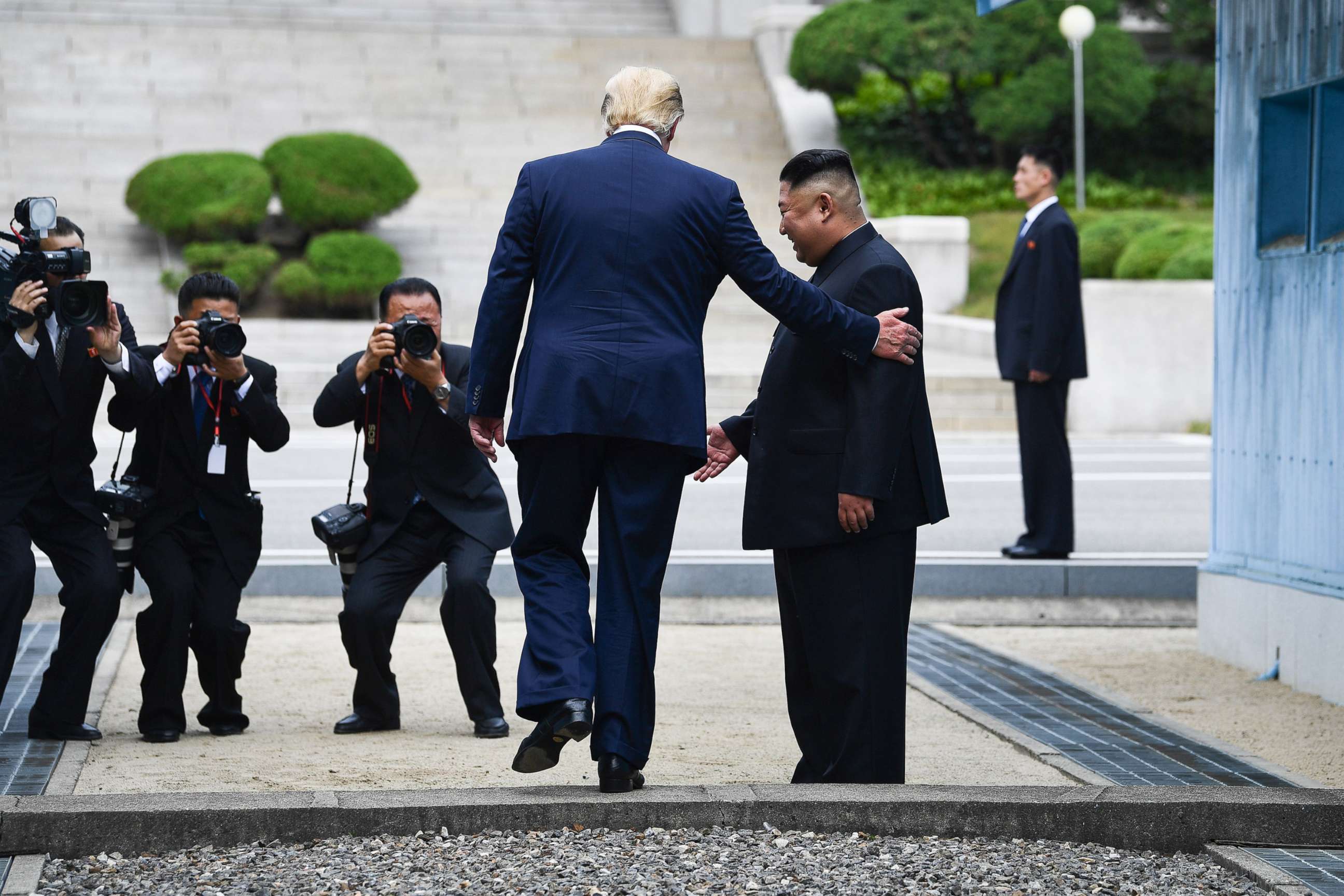After Trump and Kim's handshake, what comes next in US-North Korean talks?: Analysis
Their photo-op may have revived talks, but it's unclear how to make progress
It was a historic first for a U.S. president that revels in breaking norms and taking unprecedented action on the world stage.
But while the Trump administration celebrates the president crossing the demarcation line into North Korean territory on Sunday, the challenge of the country's nuclear weapons stockpile remains as difficult and as sprawling as before he took those steps with Kim Jong Un. Their meeting at the Demilitarized Zone seems to have reignited diplomatic talks between the U.S. and North Korea, but the task before those working-level teams has been largely the same since before the first summit in Singapore.
Those meetings will take place sometime in mid-July, according to Secretary of State Mike Pompeo, after months of little to no communication since the two leaders' last meeting in Vietnam ended without a deal. Instead, both sides have doubled down on their negotiating positions and called on the other to change their stance.

The U.S. wants the "final, fully verified denuclearization" of North Korea, where the country gives up its nuclear weapons program, including ballistic missiles, and then the United Nations lifts sanctions. North Korea, however, has still not shown that it's willing to give up its nuclear weapons, let alone do so before getting any sanctions relief. In Hanoi, Kim was only willing to dismantle the Yongbyon nuclear facility -- North Korea's declared site where it produces fissile material -- but didn't specify whether that meant all of the complex, didn't discuss his regime's other nuclear sites or existing nuclear weapons stockpile and wanted the removal of all U.N. economic sanctions in return.
While Trump and Kim committed to "complete denuclearization" in their Singapore summit, the two sides also don't have a shared definition of the term still, let alone the complex sequencing necessary to move things forward or a declared inventory of North Korea's nuclear capabilities to give talks a road map. The U.S. estimates the regime has between 20 and 60 nuclear weapons, with at least one secret nuclear facility that produces nuclear bombs.
Despite all that, Pompeo told reporters on Sunday that the two sides have made progress and that, importantly, Kim appears to have empowered his own negotiators to move forward.
"We do have a jumping-off point for these discussions, which have put us in a place where we can truly evaluate if there is a clear path forward. ... We're not where we were 12 months ago. We're further along than that," Pompeo said.
But when asked what has changed, Pompeo declined to say.

U.S. Special Representative Stephen Biegun will lead the American team, while an official from North Korea's Foreign Ministry will be his counterpart, Pompeo added. It's still unclear who it will be, but many experts suspect longtime diplomat Choe Son Hui will be chosen. She is a familiar face to American officials and has been empowered since the Hanoi summit.
Amid the deadlock, there are calls for the U.S. to soften its position and give diplomacy a chance, with some analysts arguing that the demand for full nuclear weapons disarmament before North Korea gets any economic relief is unrealistic. The New York Times reported that the administration is considering agreeing to a freeze of North Korea's program instead, but national security adviser John Bolton tweeted that he and his staff had never heard or discussed the idea.
"This was a reprehensible attempt by someone to box in the President. There should be consequences," Bolton tweeted from Mongolia, where he was meeting senior officials while other top Trump aides participated in the president's meeting with Kim.
Still, in order for there to be movement beyond another Trump-Kim photo op, the U.S. may need to be more flexible.
"I have no problem with a stunt that jolts a comatose working level process," tweeted Vipin Narang, assistant professor at the Massachusetts Institute of Technology, about the DMZ meeting. "But this was picking up the fifteen yards we lost at Hanoi because of Trump's own hardened maximalist position. If that doesn't change, this is just theatrics."
Full denuclearization "is a slogan but not a serious policy," according to Richard Haass, president of the Council on Foreign Relations and former senior adviser to Secretary of State Colin Powell. "The question remains whether the U.S. will accept less than full denuclearization and whether [North Korea] will live up to any accord."

That doesn't necessarily mean lifting sanctions in exchange for partial denuclearization, but giving North Korea other assurances that the U.S. is committed to changing the relationship, such as providing humanitarian aid or opening diplomatic facilities in each other's capitals. Those ideas have been floated before, although North Korea is clearing more interested in sanctions relief first and foremost, as it sees sanctions as economic warfare against itself.
Warm meetings like the one at the DMZ may help to change that, according to some analysts. They point to the major spread in the North Korean state newspaper on Monday, showing the two leaders embrace at Panmunjom.
"It was Trump's way of signaling to the domestic audience in Pyongyang that the U.S. is no longer the threat that it once used to be," said David Kim, a research analyst at the Stimson Center. "As much of a photo-op as yesterday's meeting was, it will have strong ramifications within political circles within North Korea to Kim and Trump's benefit."
But the personal relationship between the two leaders hasn't destroyed a nuclear arsenal in the nearly 13 months since Singapore, and it won't now.
"What's needed? Something more than a one-page letter and another handshake," according to Joshua Pollack, senior research associate at the Middlebury Institute of International Studies at Monterey.




